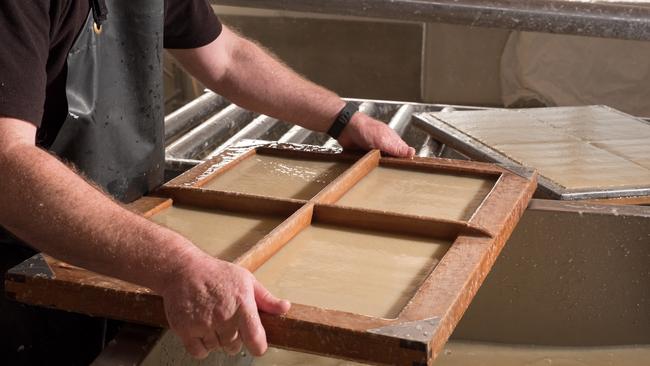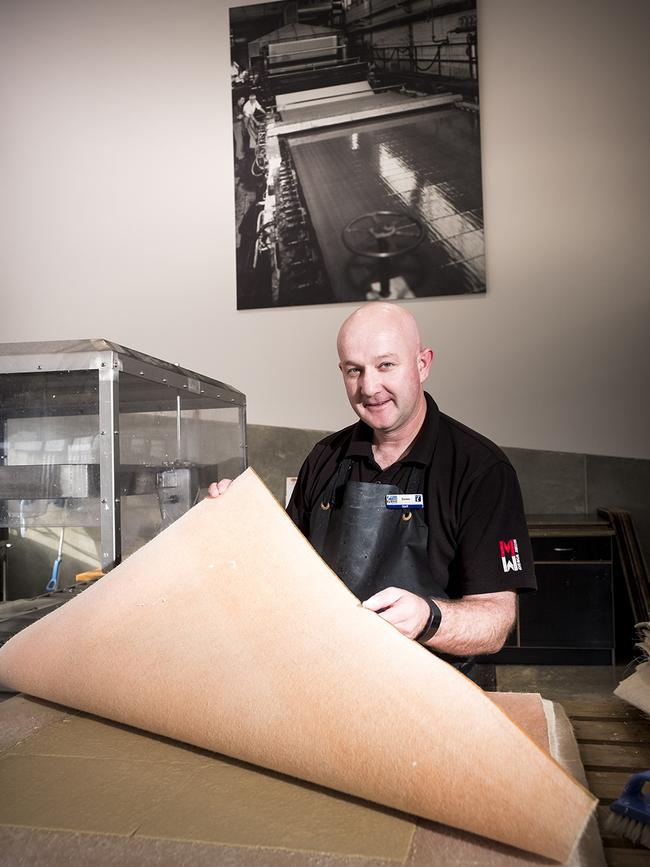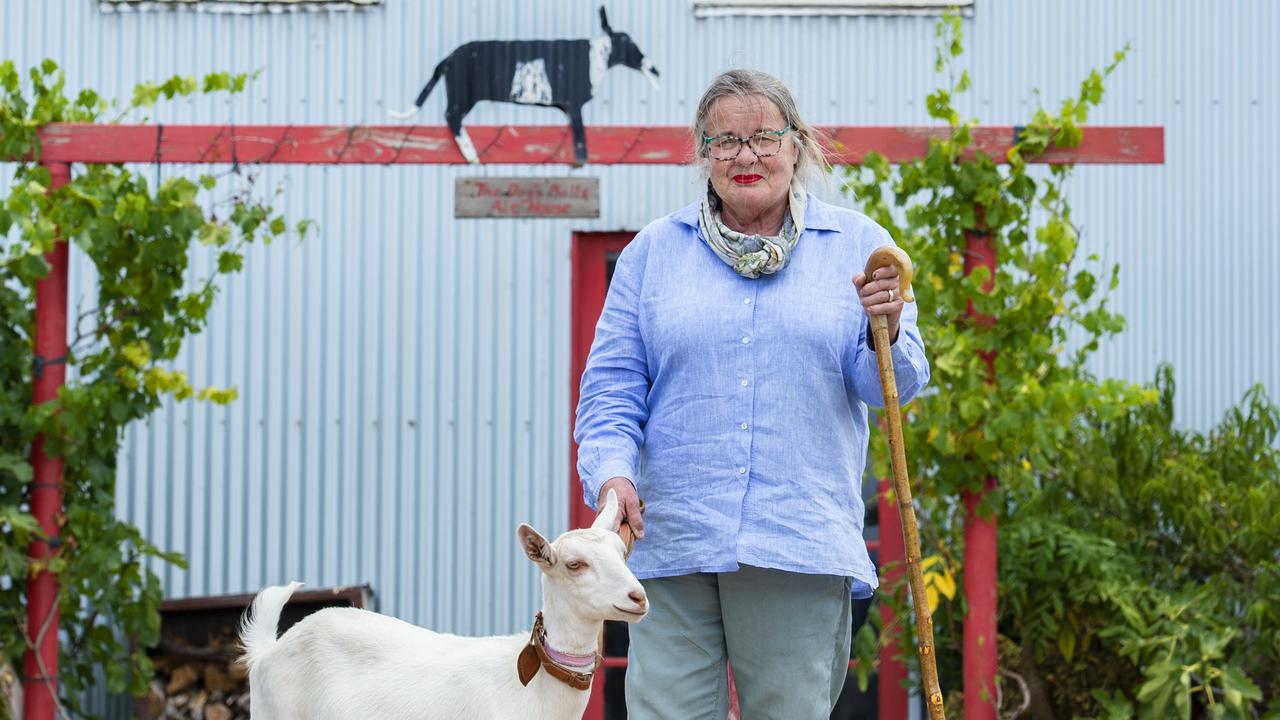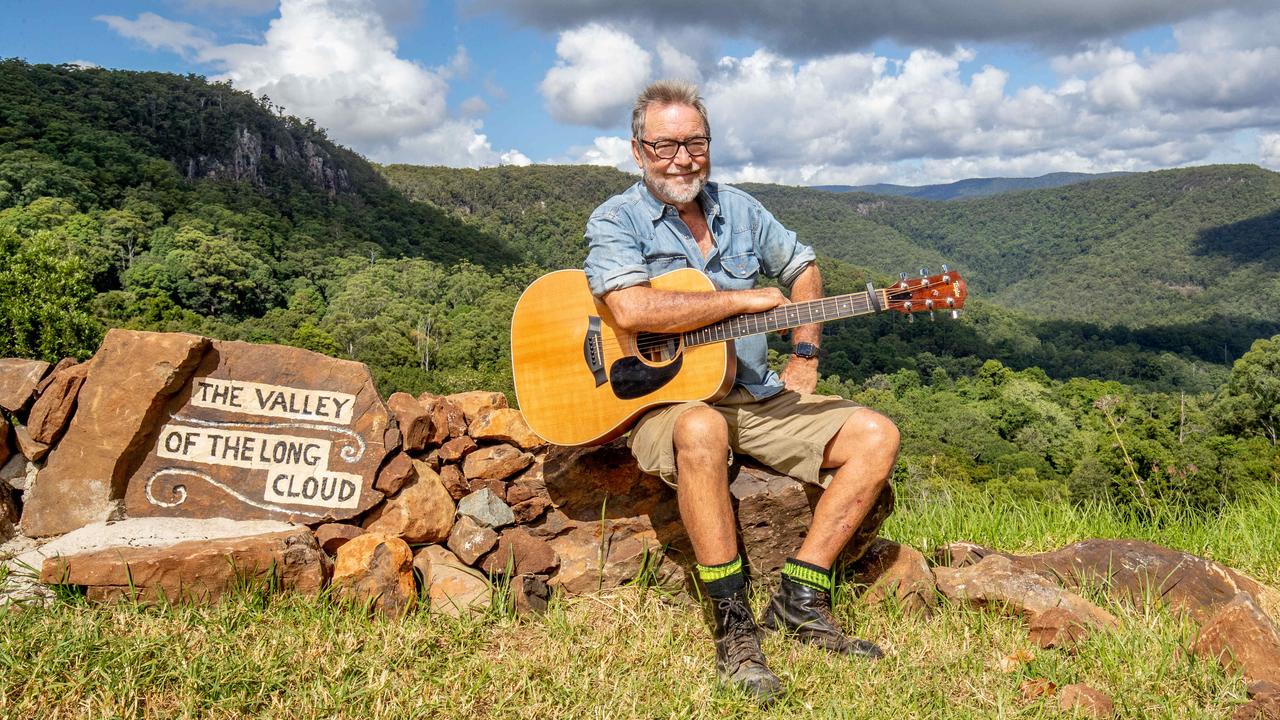Creative Paper Tasmania’s Darren Simpson keeps Burnie tradition alive
Burnie was once the centre of commercial paper manufacture, but now the product is handmade from recyclables such as old clothing, hemp — and even wombat and roo poo.

FOR 75 years the northwest Tasmanian town of Burnie was synonymous with paper.
At its peak, the town’s Associated Pulp and Paper Mills employed about 3500 people, exporting Reflex paper made from eucalypt pulp around the globe.
But now Darren Simpson is the only paper-maker left in Burnie.
While the industrial factory closed almost a decade ago, the tradition continues with Creative Paper Tasmania.
The company sells handmade reams manufactured using ancient techniques, from recycled cotton — that would otherwise go to landfill — as well as waste hemp products, and even using other sustainable materials including wombat and roo poo, preloved denim and apple pulp from a local juice company.
Darren says the paper has helped change the fortunes of the town.
“In the ’80s and ’90s the demise of the commercial production started and the town hit some tough times, industries left and employment was high,” Darren says.
“So the town saw an opportunity in tourism. The beaches were cleaned, a boardwalk was made and this program began.”
In the last years of its life, in the late ’90s, the mill (at that stage with a new owner) helped support a community-run organisation aimed at getting unemployed people job-ready through making handmade paper.
Darren was one of those people.

“It was not about competing with the mill, it was always a partnership. Handmade was a different product to commercial paper,” says the 42-year-old, who left school in Year 9.
“I didn’t give myself the best start by leaving school so early, so for me this was a big opportunity. I felt I had a place.”
While other participants went on to get jobs in a variety of industries, Darren stayed on, including when the local council took ownership of the handmade papermaking in 2003, and when the mill finally closed in 2010.
Darren was also there when Creative Paper Tasmania opened in a new location a decade ago in Burnie’s Makers Workshop, alongside the tourist information centre, cafe, retail, and artists space.
Now working with a group of volunteers and two part-time staff, he oversees the paper manufacturing, as well as offering eight 30-minute tours to visitors each day, or up to 10,000 tourists a year.
The team makes, on average, 400 reams of A5 sheets a day or about 200 A4 sheets, as well as a variety of other products. These are sold in the shop, online and in retail shops in Melbourne, Canberra and Hobart.
Their biggest buyers are artists seeking paper for watercolour painting, as well as brides and grooms, and tourists keen to take home a slice of paper made from bulldust (or cow poo).
“Every couple of months I’ll go out into the bush and collect garbage bags of roo and wombat poo or go to a farm and collect cow poo,” Darren says.
“I’ve become quite the poo-ologist, knowing what is the correct dung. It has to be an animal that doesn’t eat meat.
“You can make paper out of any vegetable matter.”
The base ingredient for all paper is cotton and hemp. Cotton is sourced from the local laundry or clothing charities who provide rag-quality towels, sheets, clothing, even denim. Synthetic stitches are first removed and the material sent to Creative Paper Tasmania in cotton squares.
Hemp stalks — an agricultural waste product — is also sourced from local farmers.
Darren works out of three industrial rooms, including the pulping and paper production room, which has large pulp machines, vats of water and press.
Cotton and hemp are placed in water and beaten until fibres swell and separate, a process that takes up to four hours.
If using poo, it is cooked to clean, as well as rinsed and filtered, before being added to the base.
Pulp is made on a frame, called a mould and deckle, shaped according to need, pressed and hung to dry.
Tourists who take part in tours can even dabble in the process themselves.
“It’s a simple technique, pretty much the same as they used in ancient China or Egypt, separating plant fibres to create a thin layer of material,” Darren says.
“At the end of the day using wood is not the most sustainable practice, also requiring chemicals in paper production. This process is easy, safe, clean, efficient and takes something that already has a use-by-date and would otherwise be thrown away.”
Darren says he enjoys being part of Burnie’s long production history.
“I love meeting people and taking them on tours, but most importantly whatever this business makes goes back to the community.” he says.


